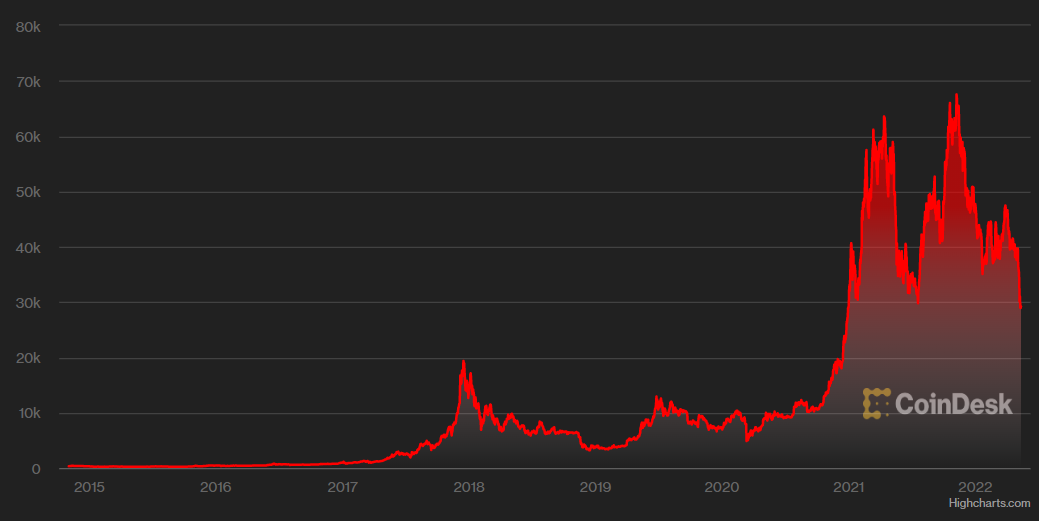Noah Smith in Noahpinion:
 When I want to know what the future is going to be like, I go ask Ramez Naam. Over the years, his spyglass has seemed to peer just a little farther into the future than other people’s.
When I want to know what the future is going to be like, I go ask Ramez Naam. Over the years, his spyglass has seemed to peer just a little farther into the future than other people’s.
My favorite example: In 2011 he wrote a guest post for Scientific American entitled “Smaller, cheaper, faster: Does Moore’s law apply to solar cells?” that alerted the world to the startling, consistent, and seemingly unstoppable cost declines for solar energy. This came at a time when almost everyone in public discourse still thought of solar as an unworkably expensive pipe dream. But Ramez (or “Mez”, to his friends) was right. Over the next decade, his prediction became conventional wisdom, not just for solar but for batteries as well. The resulting explosion in solar installation and electric vehicles has utterly changed scientists’ outlook for climate change — catastrophe may still strike, but the most apocalyptic scenarios now look distinctly unlikely. This isn’t Mez’ doing, of course, but he saw it before others did.
Why is Mez so good at predicting the future of technology?
More here.

 Last summer, three researchers took a small step toward answering one of the most important questions in theoretical computer science. To
Last summer, three researchers took a small step toward answering one of the most important questions in theoretical computer science. To  The upside of many NFTs having a uniform visual style is that, theoretically, as many of the medium’s biggest fans will stress, there is something inherently democratic about their design and their acquisition. If not every NFT creator makes the kind of money Bored Ape Yacht Club makes, they still have a fairly equal opportunity to share their work. Searching OpenSea for pieces is still easier by far than buying physical work from a gallery or an auction, and the only barrier to entry is a working knowledge of cryptocurrency. Buyers and artists who grew up on the internet of the 00s, meanwhile, may experience deja vu when given the opportunity to customise what is effectively an avatar, harking back to online cartoons like Blingees or Dollz Mania. When a rash of articles appeared in 2021 suggesting NFTs might be the Beanie Babies of the 2020s, the comparison was meant to be an insult; still, it is hard to overestimate the power of nostalgia when it comes to millennials on the web.
The upside of many NFTs having a uniform visual style is that, theoretically, as many of the medium’s biggest fans will stress, there is something inherently democratic about their design and their acquisition. If not every NFT creator makes the kind of money Bored Ape Yacht Club makes, they still have a fairly equal opportunity to share their work. Searching OpenSea for pieces is still easier by far than buying physical work from a gallery or an auction, and the only barrier to entry is a working knowledge of cryptocurrency. Buyers and artists who grew up on the internet of the 00s, meanwhile, may experience deja vu when given the opportunity to customise what is effectively an avatar, harking back to online cartoons like Blingees or Dollz Mania. When a rash of articles appeared in 2021 suggesting NFTs might be the Beanie Babies of the 2020s, the comparison was meant to be an insult; still, it is hard to overestimate the power of nostalgia when it comes to millennials on the web. During his lifetime, there was a long line of people who thought Admiral Hyman Rickover was an insufferable son of a bitch, a contemptible ass, an overbearing, opinionated, power-hungry menace. Biographer Marc Wortman called him, “obstinate, egotistical, and abrasive…” (119)
During his lifetime, there was a long line of people who thought Admiral Hyman Rickover was an insufferable son of a bitch, a contemptible ass, an overbearing, opinionated, power-hungry menace. Biographer Marc Wortman called him, “obstinate, egotistical, and abrasive…” (119) It was at a party in Greenwich Village, in the spring of 1920, that the critic Edmund Wilson first encountered
It was at a party in Greenwich Village, in the spring of 1920, that the critic Edmund Wilson first encountered  We now know who is rich in America. And it’s not who you might have guessed. A groundbreaking 2019
We now know who is rich in America. And it’s not who you might have guessed. A groundbreaking 2019  N
N What you get from John Waters is crotch punching, exploding televisions, geysers of blood, deviants, wackos and reprobates. You get phrases like “ridiculous genital display” and “penis probation”; scatology, tickle fetishes and satanic babies. You get teeming panoramas of freaks in thrall to their own depravity. (Another painter comes to mind: Hieronymus Bosch.)
What you get from John Waters is crotch punching, exploding televisions, geysers of blood, deviants, wackos and reprobates. You get phrases like “ridiculous genital display” and “penis probation”; scatology, tickle fetishes and satanic babies. You get teeming panoramas of freaks in thrall to their own depravity. (Another painter comes to mind: Hieronymus Bosch.) Sam Anderson in the New York Times:
Sam Anderson in the New York Times: Ryan Ruby in The New Left Review’s Sidecar:
Ryan Ruby in The New Left Review’s Sidecar: Patrick J. Deneen over at his substack The Postliberal Order (photo by Matt Cashore/University of Notre Dame):
Patrick J. Deneen over at his substack The Postliberal Order (photo by Matt Cashore/University of Notre Dame): Suzanne Cope in Aeon:
Suzanne Cope in Aeon:
 One of the recent trends on TikTok is an aesthetic called “night luxe.” It embodies the kind of performative opulence one usually encounters at New Year’s Eve parties: champagne, disco balls, bedazzled accessories, and golden sparkles. “Night luxe” doesn’t actually mean anything. It isn’t a
One of the recent trends on TikTok is an aesthetic called “night luxe.” It embodies the kind of performative opulence one usually encounters at New Year’s Eve parties: champagne, disco balls, bedazzled accessories, and golden sparkles. “Night luxe” doesn’t actually mean anything. It isn’t a  In the early years of the 1980s, I was fooling around with a novel that explored a future in which the United States had become disunited. Part of it had turned into a theocratic dictatorship based on 17th-century New England Puritan religious tenets and jurisprudence. I set this novel in and around Harvard University—an institution that in the 1980s was renowned for its liberalism, but that had begun three centuries earlier chiefly as a training college for Puritan clergy.
In the early years of the 1980s, I was fooling around with a novel that explored a future in which the United States had become disunited. Part of it had turned into a theocratic dictatorship based on 17th-century New England Puritan religious tenets and jurisprudence. I set this novel in and around Harvard University—an institution that in the 1980s was renowned for its liberalism, but that had begun three centuries earlier chiefly as a training college for Puritan clergy.